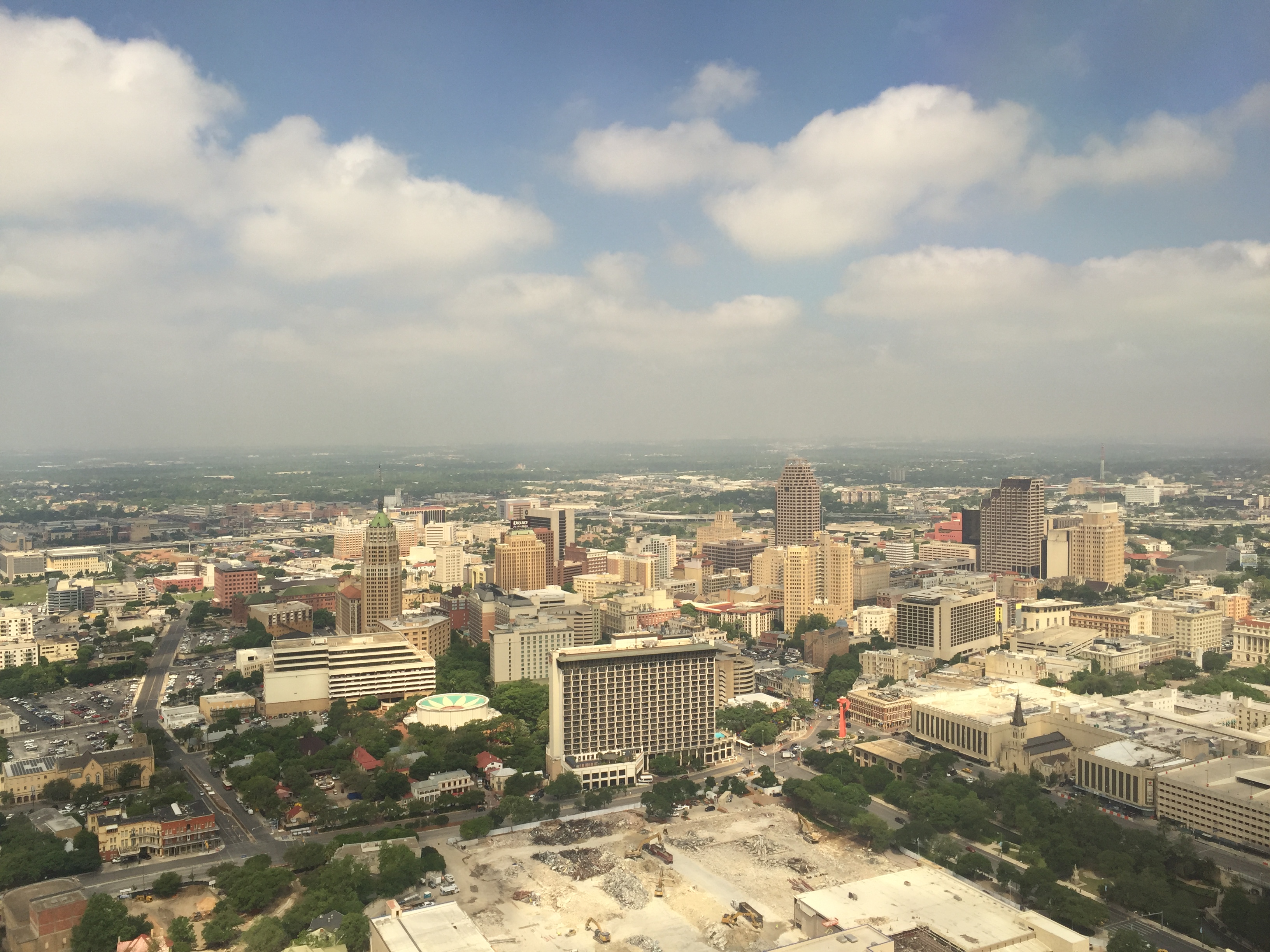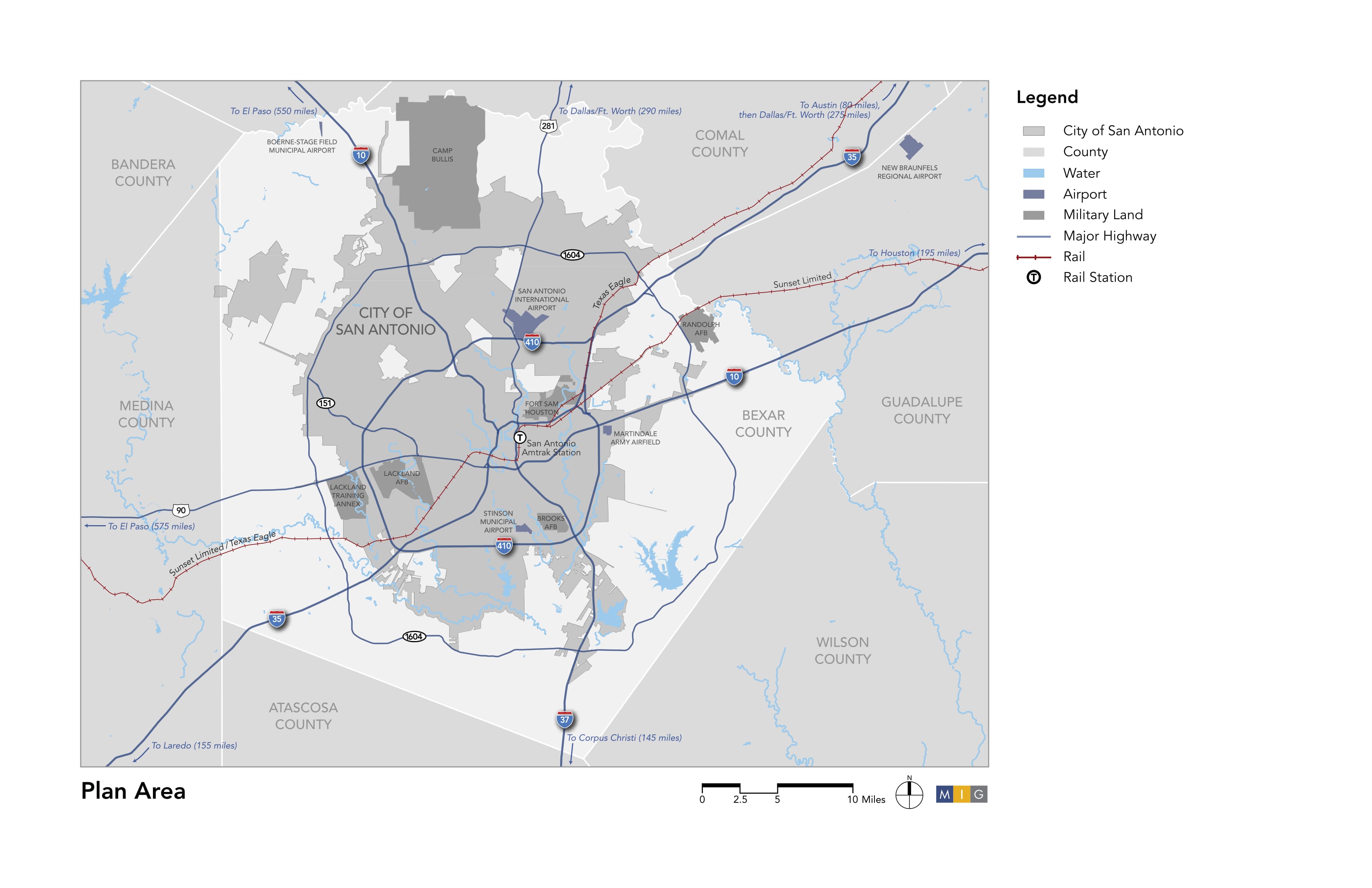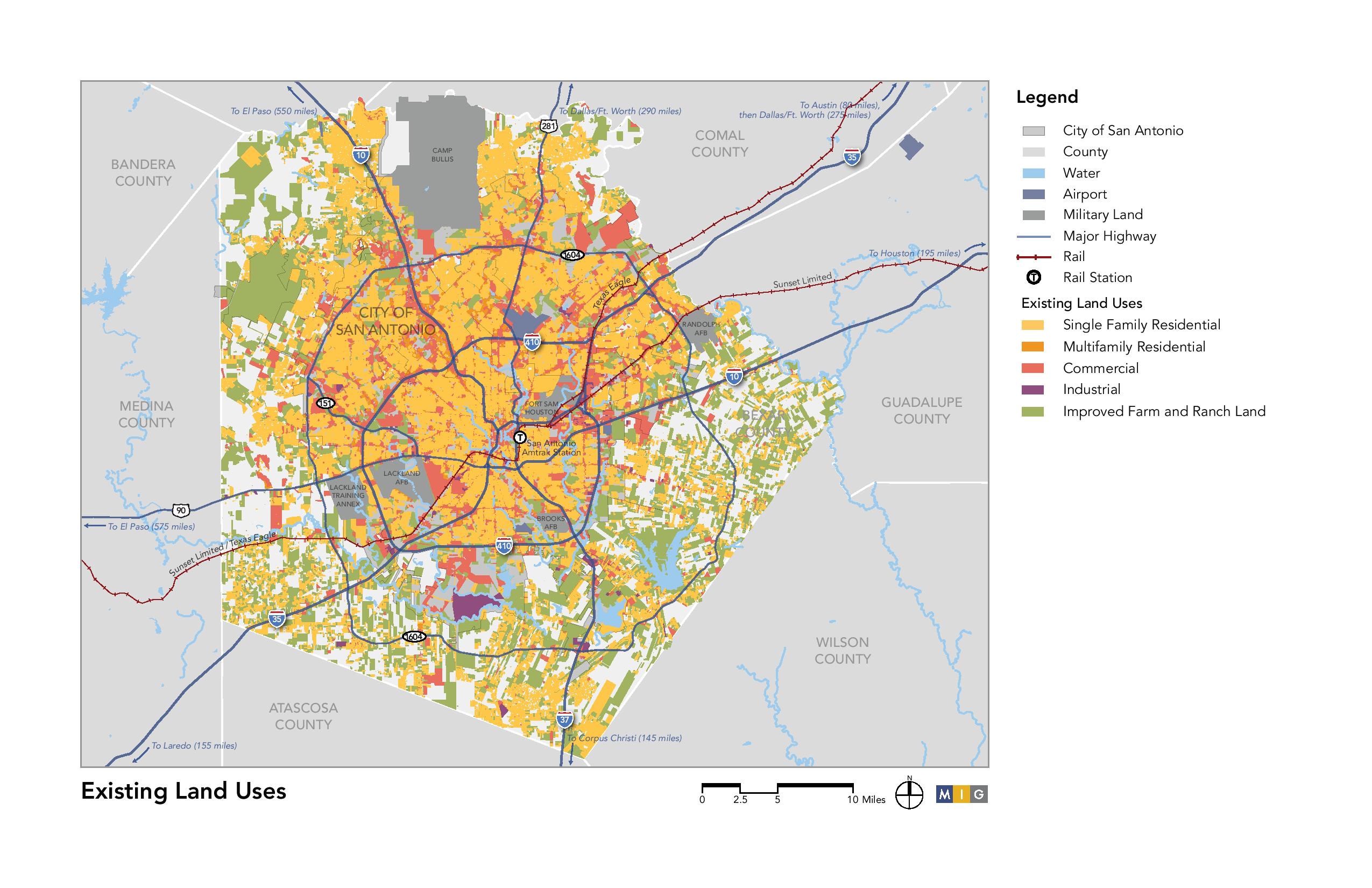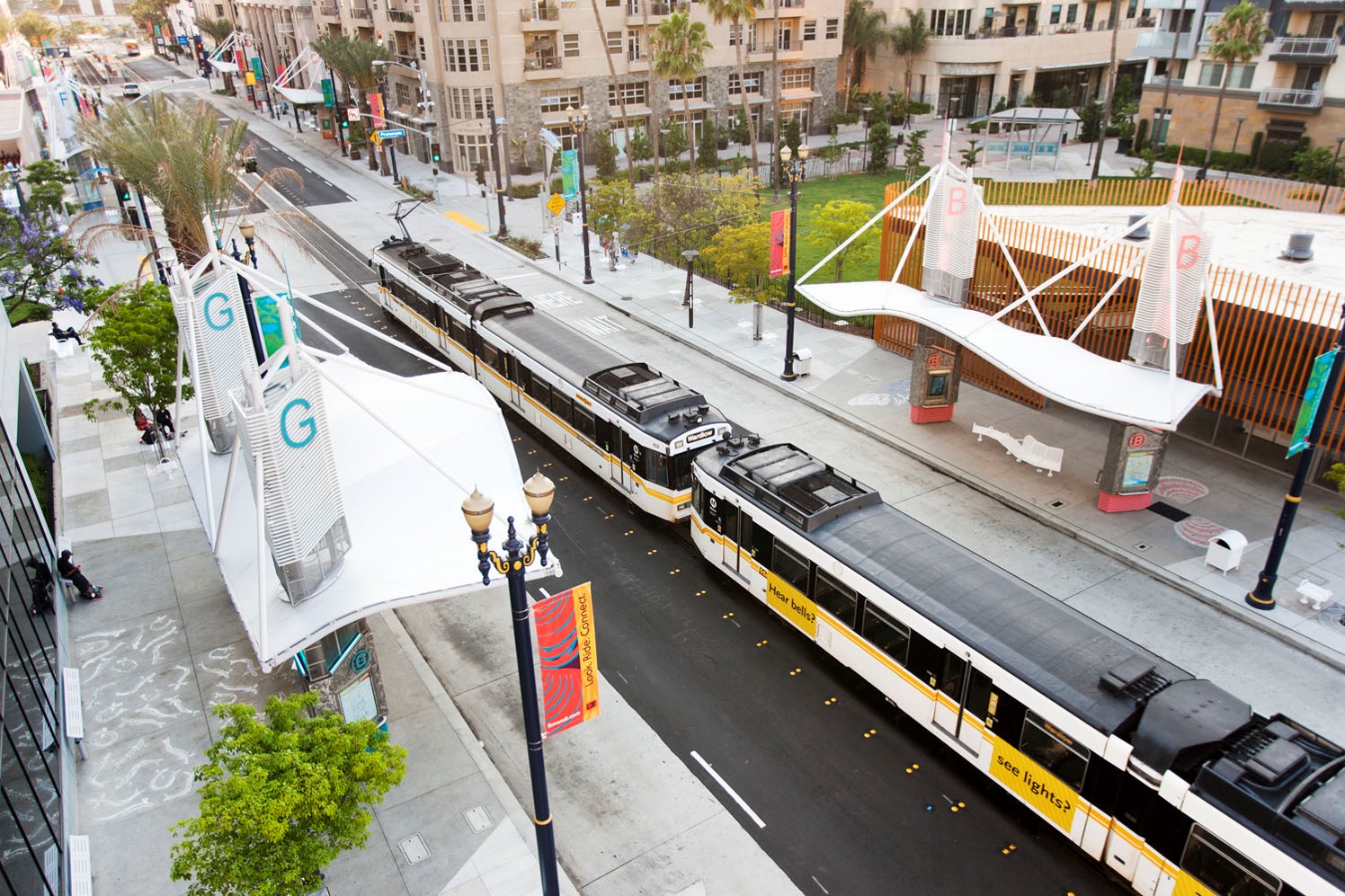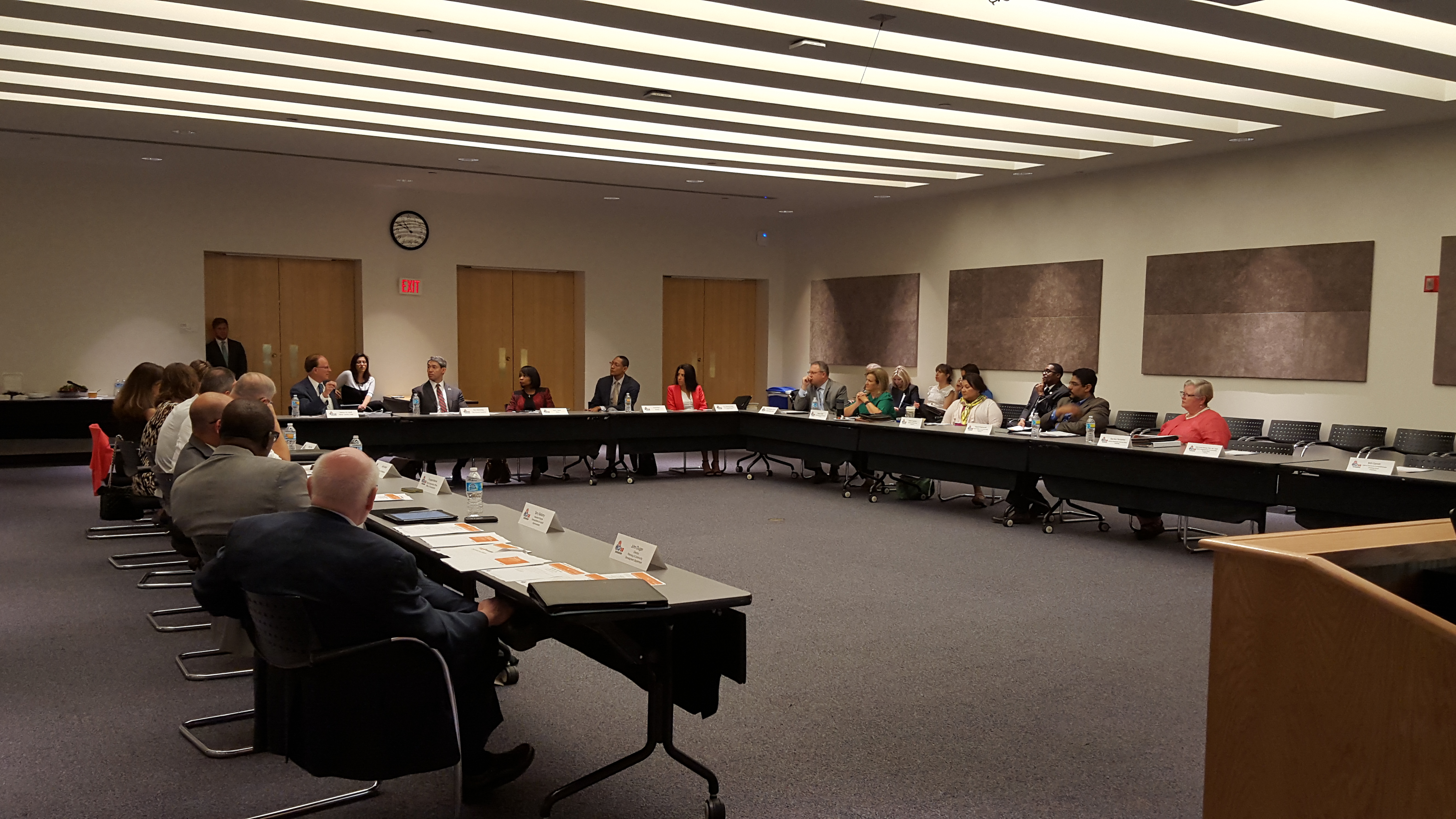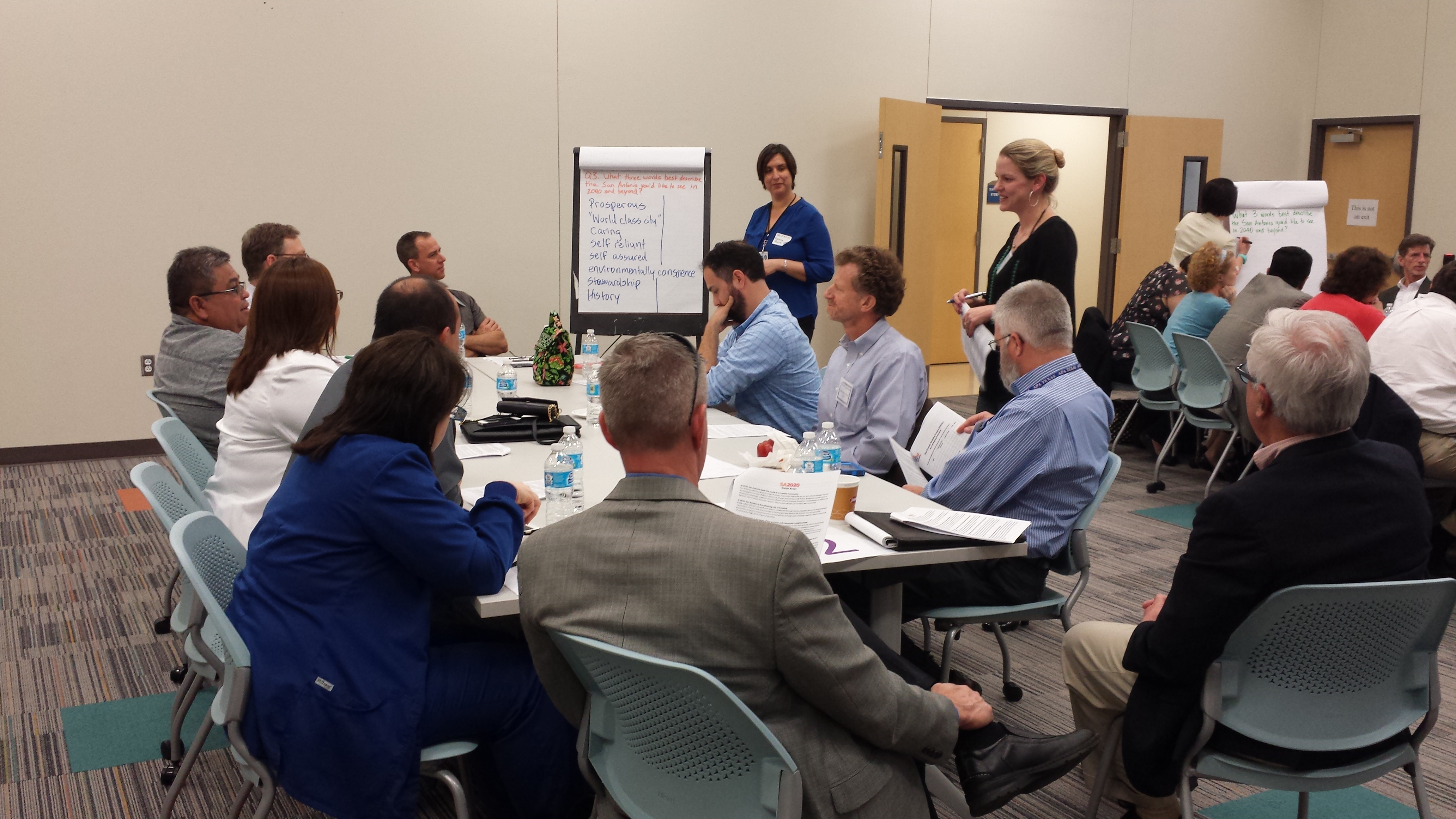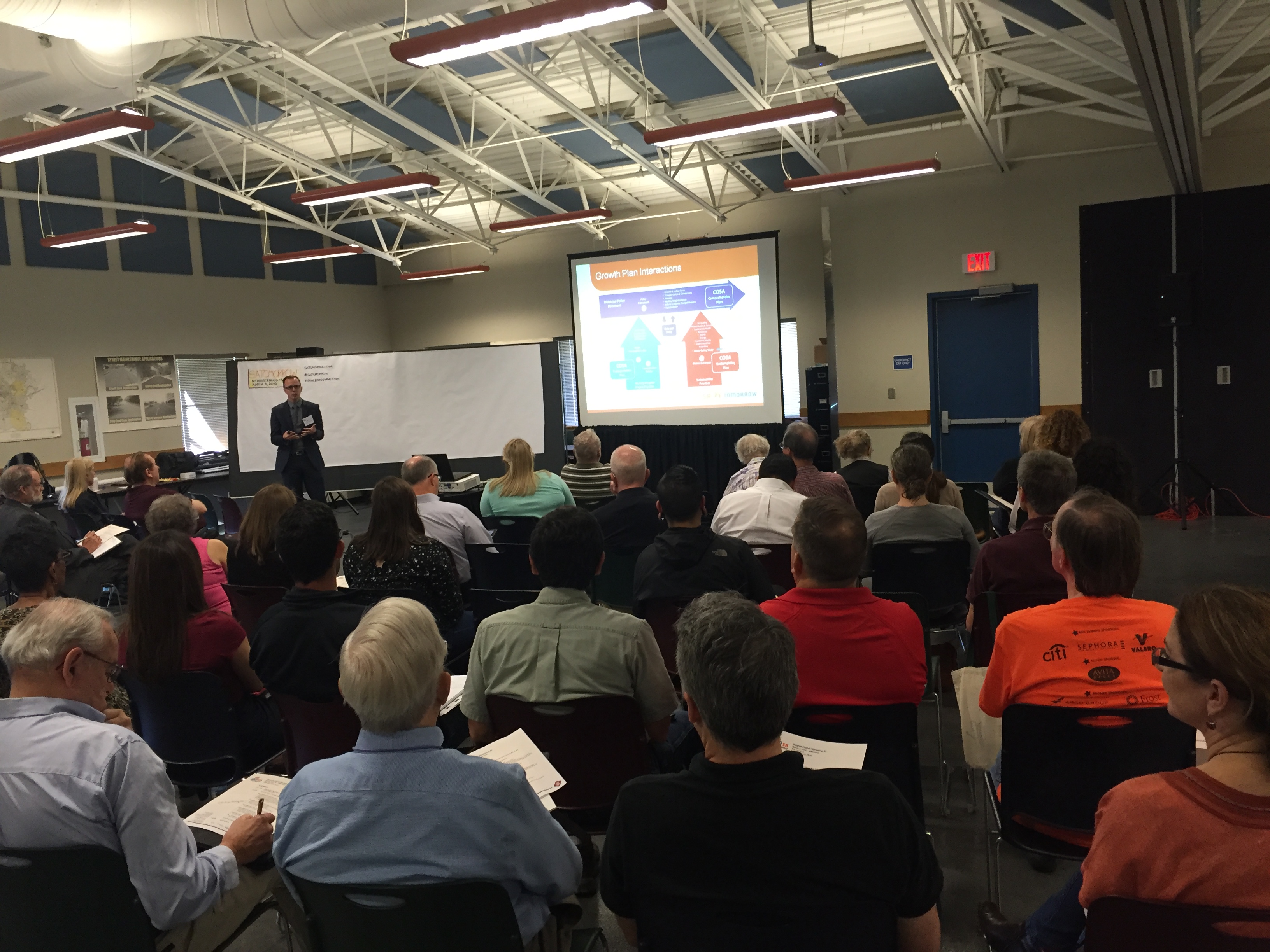San Antonio is planning boldly. We’re tackling the tough issues and making the hard choices because “business as usual” isn’t good enough. We’re planning now to ensure that the great City of San Antonio captures the type of growth and economic development that is compatible with our community’s vision of the future and provides benefits to all our current and future residents.
Background and Vision
Introduction
Water Resources and Equity
Water Resources and Equity
Introduction
In 2014, our community embarked on the momentous effort of developing a modern Comprehensive Plan for our city. Comprehensive planning is a coordinated community-based process that will help us achieve the goals that are important to our residents. It promote sound development, as well as public health, safety and welfare.
Chapter 213 of the Texas Local Government Code enables a municipality to adopt a comprehensive plan for the long-range development of a municipality. A comprehensive plan may include, but does not have to be limited to, provisions on land use, transportation and public facilities.
The city's current comprehensive plan is the 1997 Master Plan Policies. It is important to review and update comprehensive plans periodically in order to meet the changing goals and needs of a community. Any future update will include resident and stakeholder input as the Comprehensive Plan is a community-based plan. The primary objective in undertaking the current Comprehensive Plan was to engage the community in the refinement and implementation of our vision for growth and development in San Antonio that was established by the SA2020 process.
The SA2020 vision originated with a series of public forums in 2010 to develop goals for improving San Antonio by the year 2020. Thousands of San Antonians participated in the visioning process, which culminated in a detailed report, released in 2011, that outlined a bold strategic vision for San Antonio's future. Our vision reflects the community’s desire to support economic development and new jobs while fostering community arts, education, health and culture. SA Tomorrow is the city’s innovative, three-pronged planning effort established to implement the SA2020 vision through 2020 and beyond, and includes three concurrent and complementary plans: the updated Comprehensive Plan, a Sustainability Plan, and a Multimodal Transportation Plan. These plans all work in concert to guide the city toward smart, sustainable growth.
Water Resources and Equity
Why Plan Now?
Projected growth for Bexar County is expected to add up to 1.1 million new residents, with 500,000 new jobs, and 500,000 new dwelling units by 2040. We need to update the city’s Comprehensive Plan to prepare our community for this anticipated population and employment growth, and to help us understand what that growth will look like and how it will affect our daily lives. With a relatively fixed area available for future development, the anticipated population and employment growth will certainly have an impact on our community’s overall quality of life and livability. We also have to ask ourselves if it’s now time to expand our boundaries or focus on development within the city’s existing footprint. To be successful and truly address the long-term issues facing San Antonio, the Comprehensive Plan has to tackle those difficult questions that arise from an honest assessment of our community’s challenges and clearly state the hard choices we must make to achieve the community’s vision for the future. Many of these hard choices are rooted in the fact that a “business as usual” approach is beginning to result in systems and patterns that are unsustainable or that produce results counter to our community’s stated vision and goals. Reversing decades-old habits and changing entrenched systems is difficult. The uncertainty and complexity associated with planning for the next 25 years is daunting.
Perhaps the most important task tackled by our community in crafting this Comprehensive Plan was determining where growth should be directed and encouraged, and doing so in a way that protects vital historic, cultural, social and natural resources. By engaging an array of community stakeholders, jurisdictions and communities, the planning process has allowed us to articulate where growth should be encouraged and where it should be discouraged. With these areas identified, we can deploy policies and regulatory techniques that encourage development in the desired areas. Such efforts are predicated on a new way of thinking about growth that requires significant cooperation and coordination between different jurisdictions, utilities and other members of the community at a citywide and regional level.
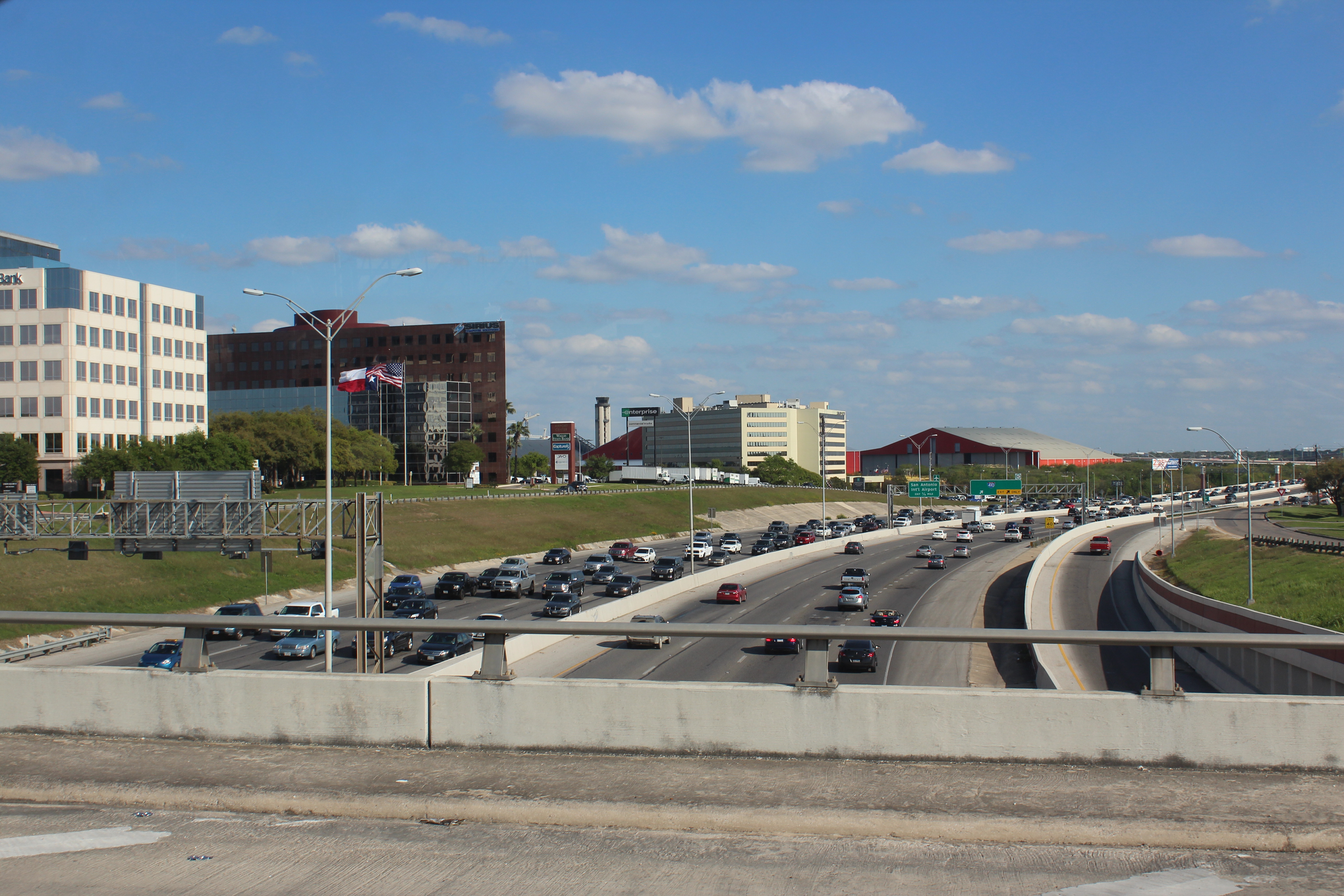
If San Antonio continues to develop along recent trends and using existing development patterns, our quality of life will decrease significantly over time leading to increases in cost of living, commute times and congestion levels.
If guided properly, the influx of new residents and jobs will enhance our city and all our residents. Planning now will allow us to direct growth consistent with the community’s vision and our goals for the future. The goals of the Comprehensive Plan effort are to:
- Update the 1997 Master Plan Policies;
- Re-affirm the community’s vision for the future;
- Implement and expand on the SA2020 vision for the built environment;
- Articulate the form of future physical growth;
- Accommodate and distribute projected population growth;
- Guide strategic decision making;
- Guide infrastructure investments and incentives;
- Reconcile existing plans, policies, and assumptions; and
- Update the city’s current comprehensive planning program."
Water Resources and Equity
Planning Area
The planning area for SA Tomorrow is the corporate limits of the City of San Antonio and its extraterritorial jurisdiction (ETJ) in unincorporated Bexar County. When implemented, the plan will also affect and inform planning with the Alamo Area Metropolitan Planning Organization (AAMPO) and other regional agencies. While the Comprehensive Plan is an umbrella policy and planning document with citywide implications, it does not alter or negate our existing neighborhood plans, community plans, sector plans or any other land use plans. Rather, the Comprehensive Plan and the larger SA Tomorrow effort provide an overarching planning framework, big picture direction and the tools necessary for our residents to create, coordinate, update and implement plans and strategies for regional centers, corridors, and neighborhoods, along with many other existing and future places throughout the city.
Water Resources and Equity
Plan Background
A variety of previous and concurrent efforts were critical inputs to the Comprehensive Plan process. Several of those efforts are highlighted below.
1997 MASTER PLAN POLICIES
The previous umbrella document is the San Antonio Master Plan Policies, adopted May 29, 1997. These policies provided guidance in the evaluation of future decisions on land use, infrastructure improvements, transportation and other issues, setting broad, long-range goals for San Antonio. The 1997 Master Plan Policies have been largely implemented through more detailed levels of planning by means of other citywide functional plans, sector plans, neighborhood and community plans and community development plans.
2020 MASTER PLAN POLICIES
The SA2020 process was a community-wide visioning effort guided by a steering committee of community leaders and representatives. The Steering Committee consisted of three Tri-Chairs and 22 respected members of the community, representing the public, private and nonprofit sectors. The Steering Committee drew from the diversity of San Antonio, including a broad range of interests and areas of expertise. The process was supported by the City of San Antonio and the Office of the Mayor, whose staff was responsible for meeting logistics, publicity and coordination.
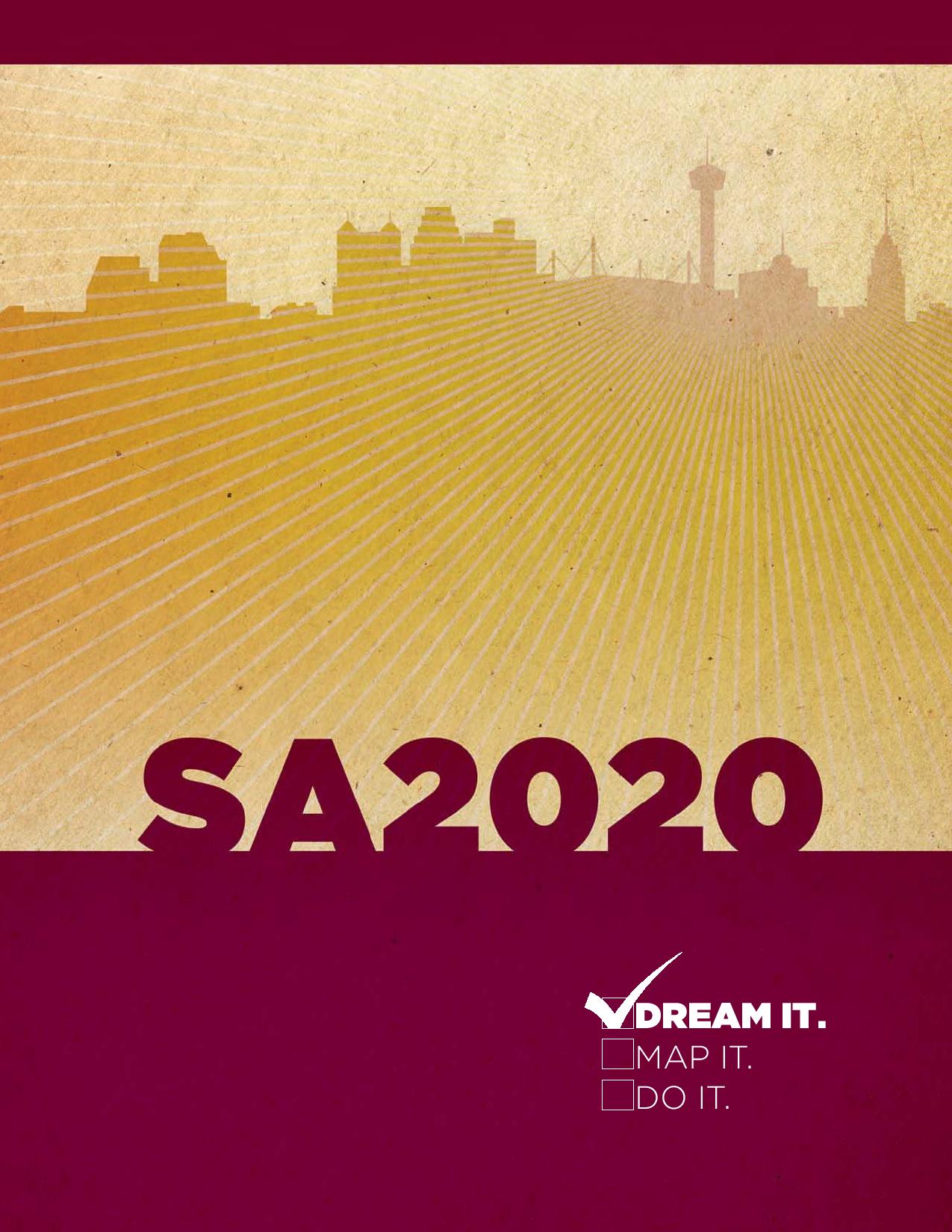
The SA2020 process began with a Vision Scan to honor and build upon past community visioning efforts, including both broad-based visions and targeted vision statements from various community sectors. The Vision Scan process identified common themes and values, and provided the foundation of a structural framework for the SA2020 process, which is organized into 11 areas:
- Arts & Culture;
- Community Safety;
- Downtown Development;
- Economic Competitiveness;
- Education;
- Family Well-Being;
- Government Accountability & Civic Engagement;
- Health & Fitness;
- Natural Resources & Environmental Sustainability;
- Neighborhoods & Growth Management; and
- Transportation.
SA2020 resulted in an overarching vision for our community, as well as more detailed visions, targets and strategies for each of the 11 areas. SA2020 provides a significant foundation for the Comprehensive Plan and the larger SA Tomorrow efforts.
COMPREHENSIVE PLAN INITAL STUDIES
The city completed several technical studies before initiating the more formal SA Tomorrow effort. These studies provided a baseline understanding of how San Antonio fares in terms of capacity, land buildout and costs associated with different growth scenarios and community goals. The three major components to the initial studies are summarized below.
Component 1: Land and Development Capacity Study
This study assessed the land and infrastructure capacity necessary to accommodate additional employment and housing development within the existing city limits and the city’s extraterritorial jurisdiction (ETJ). The study found a lack of residentially-zoned land to accommodate the forecasted demand for housing in several portions of the city. There isn’t enough land to capture housing development, particularly within the north part of the city—if development continues under the same density and development patterns. Increasing the density of neighborhoods and the average density of single-family development will help reduce some of the demand for land. Additionally, there is an oversupply of land in underutilized commercial- and industrial-zoned parcels. Areas with large concentrations of vacant and underutilized commercial and industrial-zoned parcels can be repositioned as residentially-focused, mixed-use neighborhoods that will increase the supply of residential land in these inner subareas.
The analysis of housing preferences and existing housing conditions indicated there is unmet demand for walkable neighborhoods, based on existing conditions and consumer preferences. San Antonio lacks walkable neighborhoods. Despite limited newly constructed single-family development projects that have a more walkable design, local demand exists for more walkable development. The recent inner city development and the strength of the city’s historic neighborhoods—which, on average, are more walkable than the rest of San Antonio—are indicative of this demand.
San Antonio has reached the limits of unconstrained outward growth due to land availability, high cost and difficulty of developing infrastructure and utility service. There is land capacity within the county to accommodate the growth forecasted by 2040; however, it will likely require investment in currently under performing parts of the city and development at slightly higher densities in targeted locations.
Component 2: Future Jobs, Economic Opportunity and Housing Study
This study analyzed the demand for jobs and housing over the next 25 years and the impact of forecasted demand on development patterns and geographic locations. Employment in San Antonio has a polycentric geographic pattern, with clusters of employment dispersed throughout the city. This reflects the dispersed nature of the major economic drivers of the city’s economy (military, healthcare, education and tourism). There are currently inadequate land use controls or incentives, and a lack of appropriate master plans to guide and attract employment growth. This has made it difficult for the city to leverage these assets to their full potential.
However, jobs within the city have somewhat organically concentrated into 13 centers or nodes, largely along major transportation routes. This configuration offers an opportunity to align economic development efforts with land use planning and infrastructure investment. Focusing economic development within these centers will help transform these areas from employment centers to true mixed-use activity centers.
Component 3: Fiscal Impact of Alternative Growth Scenarios
This fiscal analysis had two main findings regarding new development. First, infill development was found to have a lower cost (infrastructure, services, etc.) to the city relative to potential tax revenues than greenfield development (in vacant areas). Second, the density of a development is key. The potential costs and benefits of five existing development patterns were also assessed. The denser programs tested had the greatest revenue relative to costs for the city. Bexar County also recently analyzed the fiscal impact of development. The County found that it is not equipped to provide an adequate level of urban services due to limitations in its revenue generation and service provision tools provided by the State, which will ultimately create a burden for the city.
Water Resources and Equity

The Multimodal Transportation Plan includes policies, strategies and projects intended to promote a more balanced transportation system.

The Sustainability Plan includes recommendations in seven focus areas addressing environmental sustainability, economic resiliency and social equity.
SA TOMORROW PLANS
To achieve our community’s vision as expressed and tracked by SA2020, the city launched a robust, three-pronged planning effort: SA Tomorrow. SA Tomorrow encompasses this Comprehensive Plan, as well as a Multimodal Transportation Plan and a Sustainability Plan. All of these efforts focused on addressing the challenges and opportunities associated with adding over one million people to our region by 2040.
Multimodal Transportation Plan
The city worked with stakeholders, partner agencies and the larger community to develop a Multimodal Transportation Plan that builds upon and operationalizes Comprehensive Plan goals and policies, incorporates all modes of transportation and recommends a sustainable, safe and efficient transportation system that can support the new residents, housing and jobs anticipated for our community over the coming decades.
Its recommendations are consistent with the Comprehensive Plan's vision for the city's transportation system. It communicates the city's transportation strategy for the future, proposes improvements that address all modes and provides methods for prioritizing projects.
Sustainability Plan
The community and stakeholders described a sustainable San Antonio as an inclusive and fair community with a thriving economy and a healthy environment. The Sustainability Plan highlights seven focus areas and five cross-cutting themes. Each focus area has its own vision, outcomes, strategies and measures of success. The cross-cutting themes—identified by reviewing past surveys, current plans and policies and public input—identify and highlight key priorities. These priorities create the framework on which every identified strategy was evaluated to ensure that upon implementation, the state of these priority areas is improved or, at a minimum, not negatively impacted. Additionally, these cross-cutting themes have been considered and integrated into each of the major components and elements of the Comprehensive Plan and the Transportation Plan.
Water Resources and Equity
VIA'S VISION 2040
Vision 2040 is a community-driven process to update VIA Metropolitan Transit’s Long Range Comprehensive Transportation Plan through the year 2040. Through its planning process, VIA customers and stakeholders, along with residents in the larger San Antonio region, have helped develop our region’s vision for the future of public transportation. VIA’s Vision 2040 planning process occurred alongside SA Tomorrow and other significant planning efforts by the City of San Antonio, Lone Star Regional Rail and Alamo Area Metropolitan Planning Organization. Developing these multiple plans together ensures unprecedented synergies across all efforts for our city and region.
Vision 2040 identifies a range of transit solutions to serve our region’s busiest and most vibrant areas of activity, employment and housing. The plan will present various modes of transportation, and develop system alternatives to understand how transit could affect our region. By engaging the community, Vision 2040 will work to evaluate all alternatives and identify a preferred system plan that meets the transit needs of today and tomorrow. The preferred system plan could result in a mix of high-capacity transit, express bus, skip-stop, circulator and local bus services.

Based upon community input, VIA's Vision 2040 plans for the future of transit connectivity in San Antonio over the next 25 years includes a substantial expansion of the existing Primo bus service and enhanced premium and express service.
Water Resources and Equity
Plan Process and Engagement
The planning process for the Comprehensive Plan began in Fall of 2014 and extended over a year and a half. A variety of opportunities were offered for key partners, stakeholders and the larger community to provide input and feedback. Four major phases of the planning effort were supported with stakeholder interviews, Plan Element Working Groups, neighborhood workshops, public meetings and other outreach efforts. The following provides an overview of the planning phases and timeline, as well as several key sources of the community input that informed and inspired the contents of this document.
PHASES AND TIMELINE
Building on the Comprehensive Plan Initial Studies, the first phase of the process focused on the development of the Existing Conditions Technical Background Report. That report presents data and summaries of document and plan reviews for each of the nine content-specific elements of the Comprehensive Plan.
With the Existing Conditions Technical Background Report complete, the process shifted toward policy analysis and the development of goals and policies. The existing conditions report, the subsequent policy analysis and several rounds of working group revisions informed a framework of goals and policies for each plan element.
In the third phase of the process, plan element goals and policies were further refined in conjunction with a concurrent process of identifying and developing place types that will help guide and shape growth, redevelopment, and preservation in neighborhoods, regional centers, and major corridors throughout the city. In the end, the goals and policies reflect and support our community’s vision and the key guiding principles that characterize the city’s ambitions for the next 25 years.
The final phase of the process was to draft a new Comprehensive Plan specific to San Antonio that will be adopted by the City Council. Throughout the process, there was ongoing community involvement and stakeholder input that is woven into the final plan.
COMMUNITY OUTREACH
Broader community outreach included a variety of activities ranging from stakeholder interviews and focus groups to large community events and from surveys to a variety of web-based activities and social media. A large SA Tomorrow kick-off event linked the Comprehensive Plan effort to concurrent planning for the Multimodal Transportation Plan, Sustainability Plan, SA2020 and VIA’s Vision 2040 Plan Update. Stakeholder interviews, focus groups and surveys were used to take a deeper dive into issues and opportunities related to housing, mixed-use development, regulatory hurdles and incentives, new policy direction and the future of existing and future regional centers.
A website was developed for the larger SA Tomorrow effort with an interactive section devoted to the Comprehensive Plan. Twitter, Facebook and Instagram were used extensively throughout the planning process to promote events and drive participants to surveys and the website for more information and opportunities to get involved.
COMPREHENSIVE PLAN COMMITTEE
The SA Tomorrow Comprehensive Plan Committee (CPC) is a subcommittee of City Council that provided high level direction to staff and the larger planning efforts throughout the planning process.
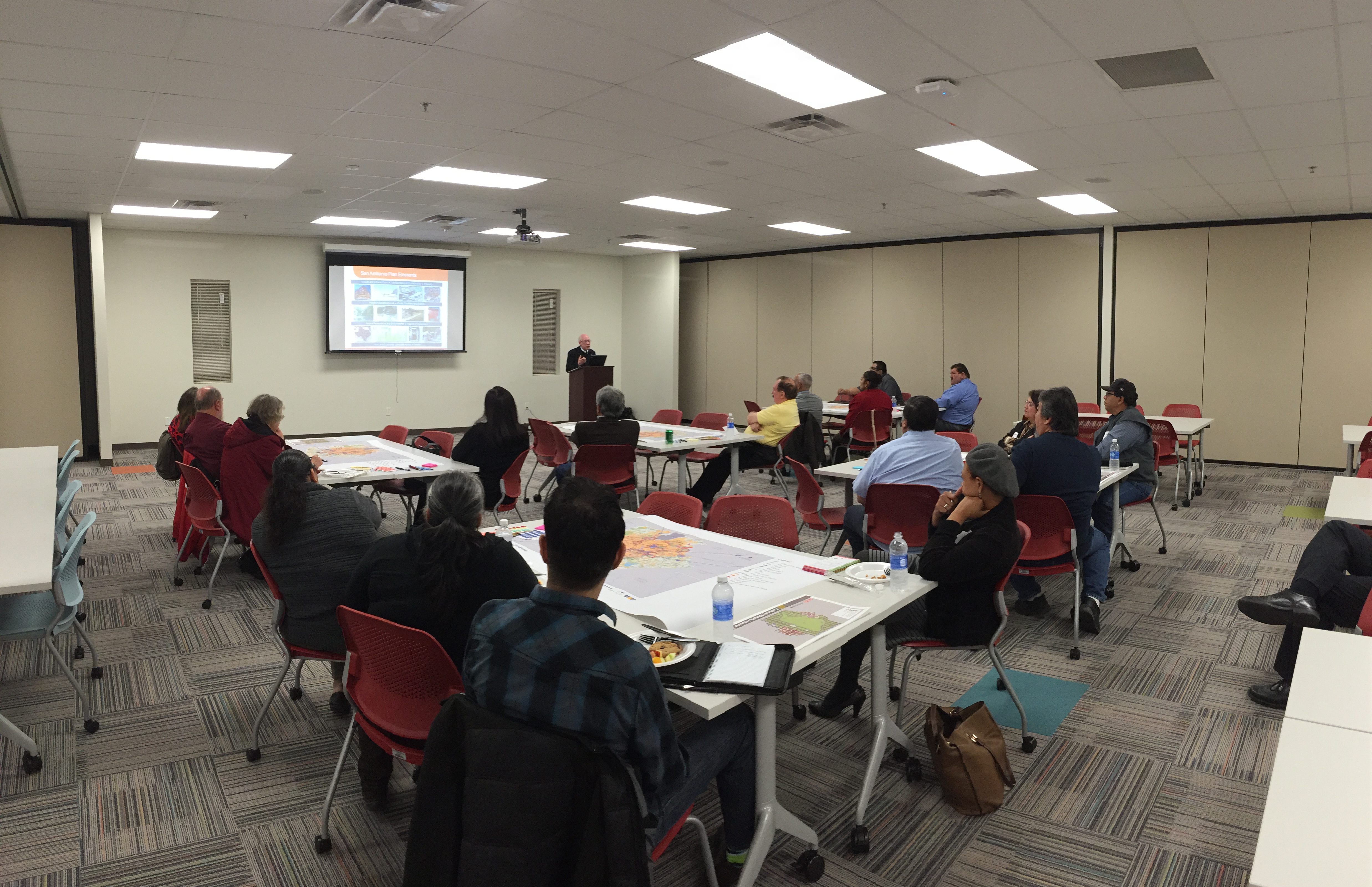

COMPREHENSIVE PLAN ADVISORY GROUP
The Comprehensive Plan Advisory Group (CPAG) is a collection of leaders from over 65 community partner organizations and agencies. The CPAG met on several occasions during the planning process to review draft materials and identify creative ways for community organizations to engage in the planning process and partner in implementation of the Comprehensive Plan. The CPAG membership nominated members of their organizations to participate in the Plan Element Working Groups described below.
Water Resources and Equity
Plan Organization
The Comprehensive Plan is organized into four major sections. Each section contains multiple chapters. The purpose of each major plan section is summarized below.
Section 1: Background and Vision
The first section provides an orientation to the purpose, structure and foundation of the Comprehensive Plan. This section includes a plan introduction, an overview of assets, challenges and opportunities, and the vision framework. The vision framework includes the updated vision for the San Antonio of 2040, a set of guiding principles and the cross-cutting themes that guide the entire SA Tomorrow effort.
Section 2: Plan Framework
The second section of the plan provides the overarching framework for the physical form of San Antonio. The Building Blocks chapter outlines how regional centers, corridors and neighborhoods work in concert to create the San Antonio we envision over the coming decades. The overview of 12 place types shows how they build upon and protect existing and future community assets by creating places that are livable, inclusive and sustainable. A final chapter in the section provides guidance on the application of place types throughout our community.
Section 3: Plan Elements
Section 3 of the Comprehensive Plan dives into the individual plan element topic areas. After the presentation of an overarching plan element framework, the section devotes a chapter to each of the nine Plan elements shown on page 1.15. Each chapter includes an overview of major issues and challenges specific to each element with a set of goals and policies to set the direction for how our community will respond to or address the challenges before us.
Click one of the Plan Element icons below to learn more about it.
Section 4: Implementation
The final section of the Comprehensive Plan focuses on implementation. It includes an overarching Implementation Strategy that is built on an updated approach to the Comprehensive Planning Program for the city. The section then provides detailed indicators, targets and actions that are overarching and specific to each plan element.
